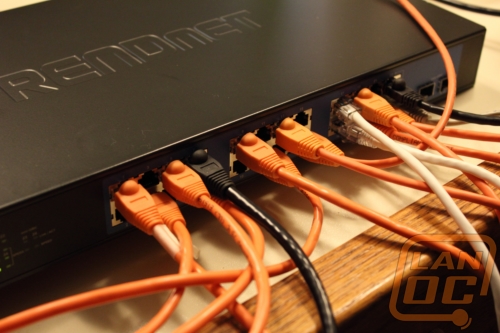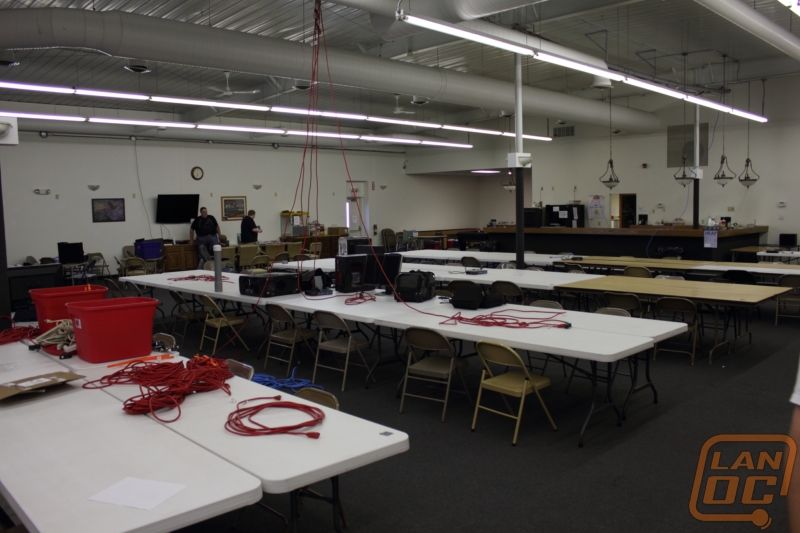
Our network is sponsored by: Trendnet
Review by: Wes
Pictures by: Wes
The idea behind the network
The key to any good network, especially one that is so reliant on low latency and high speed file transfers, is an efficient layout. When you are talking 100 plus people the layout actually starts when planning out your tables. Each row of tables is going to run off of its own switch, meaning the largest table you could do a 24 port switch is a row of 20, if you added one more table the switch would be full leaving you no room to hook back up to the backbone. To prevent people from having too short of a network cable we typically run tables of 16, leaving us room to expand if needed.
Once you have your tables figured out, total up all of you tables and then add in any important servers. That number together will give you the number of ports you need on your backbone switch leaving one to go to your router. Each of the table switches plug directly into the backbone giving them the best possible connection. The key to remember here is you are going for a tree network topology. The idea is to give the shortest distance between any attendee and the servers. The backbone is also very important when it comes to file transfers. The backbone will carry all of the network traffic from between tables; meaning even if you are only running a 100Mb connection to the attendee a gig backbone will help prevent slowdowns. With 20 people at a table, trying to share a 100Mb connection to the backbone only leaves a 5Mb connection per person. At that point everyone might as well be playing at home on the internet.


